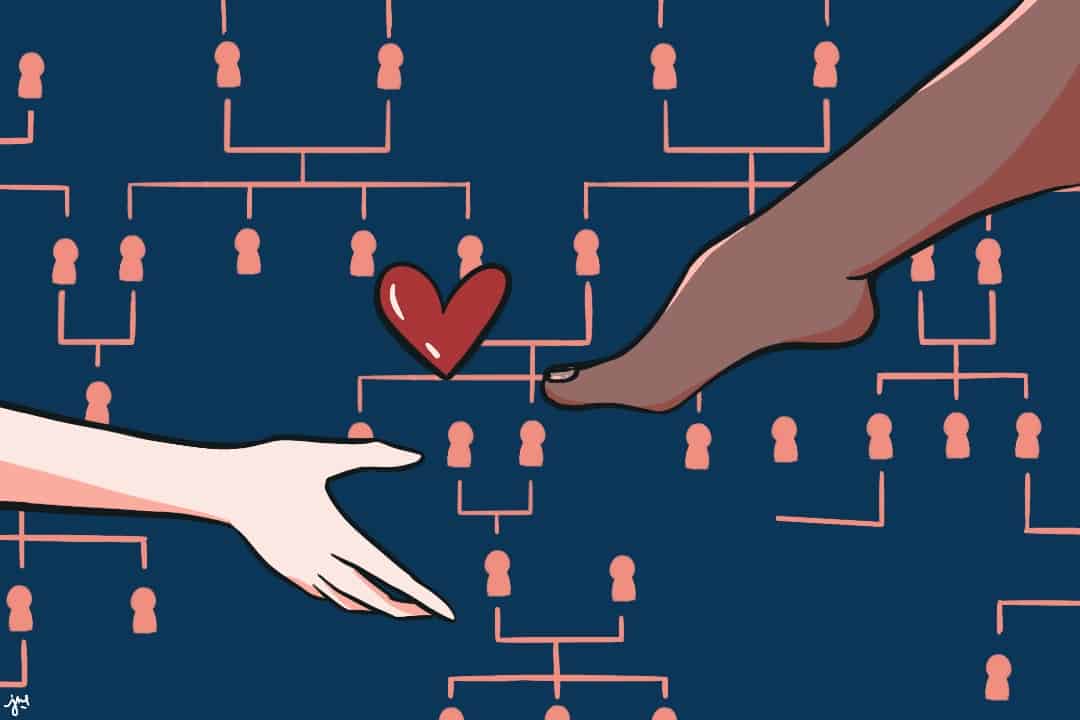Fetishes are non mainstream sexual interests in non genital body parts, inanimate objects, or behaviours. But why do some people have fetishes while others do not? Are fetishes acquired, inherited, or both? This topic is debatable, but evidence suggests that fetishes may be inherited.
What are fetishes?
Using an extensive sample survey, Claudia Scorolli — an associate professor and researcher in the Department of Philosophy and Communication Studies at the University of Bologna — and her colleagues classified the objects of fetishism into three categories and six subcategories. The three categories are body, objects, and behaviours.
The six subcategories are parts or features of the body like feet or weight — including body modifications like tattoos; an object usually in association with the body, like shoes or headphones; an object not usually associated with the body like dirty dishes or candles; a person’s own behavioural habits like biting fingernails; the behaviour of other persons like smoking; and interactional behaviours like domination, humiliation, and roleplay.
Some may think fetishes are rare, as they are non mainstream sexual excitements. However, recent findings counter this belief. In a 2016 study of 1,040 Canadians, 26 per cent of participants reported engaging in some form of fetish activities at least once in their lives.
In other studies, over 60 per cent of male college students and more than 50 per cent of female college students reported fantasizing about a behavioural fetish known as BDSM — bondage, domination, submission, sadism, and masochism. These results may make it less embarrassing to admit and discuss fetishes.
Despite these statistics, fetishism was once considered to be a mental illness, similar to non heteronormative sexualities and non cisgender identities. But now, according to the Diagnostic and Statistical Manual of Mental Disorders, Fifth Edition, fetishism is considered a disorder only when it causes “significant distress or impairment in social, occupational, or other important areas of functioning.” Gloria Brame, a sexologist and self-proclaimed fetishist, iterates that fetishism isn’t a hobby, but a legitimate sexual identity instead.
Unfortunately, fetishism researcher Giselle Rees has found that people with fetishes are still stigmatized and discriminated against as unhealthy, sick, or ‘crazy.’ Rees explains that one popular myth about people with fetishes is that they “need their fetish to have sex.” As such, those with fetishes are considered “abnormal.” However, Rees explains that people with fetishes can regularly engage in and enjoy conventional intercourse without their fetish.
What causes fetishes?
While initial theories claimed that fetishes resulted from early life experiences, later experiments contradict this thesis.
In 1966, Stanley Rachman — a psychologist at the Institute of Psychiatry, Maudsley Hospital and former professor emeritus in the Department of Psychology at the University of British Columbia — conducted a study to investigate whether a fetish was a conditioned response. Participants were first shown photographs of naked women, followed by a picture of women’s black boots. Following this, the image of black boots was found to induce sexual arousal successfully.
Anthropologist Katharine Gates theorizes that some fetishes are a result of simulation of the brain circuit involving smell and memory. Since the olfactory, memory, and emotion centres of the brain are tightly connected, a certain smell could become a trigger that connects with emotional contents and memories. This theory may explain air freshener fetishes, as well.
Further, neuroscientist Vilayanaur Ramachandran provides a neurological explanation for foot fetishes. In the brain, sensory information from the feet is processed adjacent to sensory information from the genitals. In this regard, there may be some “neural crosstalk” between these two brain areas. Fetishization is less likely to occur for body parts whose cortical representations are far from that of the genitals.
Do fetishes have a genetic component?
Fetishes tend to be permanent. In their 2007 paper, Scorolli and her team proposed that body-related fetishes may be genetic, while object-related fetishes may be more related to early-life events.
A behavioural fetish may reflect an individual’s personality. An example of such a personality trait is sensation-seeking. The Kinsey Institute’s research fellow Justin Lehmiller identified a pattern of interest in BDSM fetish among sensation-seekers.
Sensation seeking has a genetic basis related to the dopamine receptor D4 (DRD4) gene, which encodes the dopamine receptors that receive and relay biochemical signals from dopamine. A rare mutation of the DRD4 gene with 7-repeat sequences (7R) results in a version of the gene that encodes dopamine receptors less sensitive to dopamine. This means that people with the DRD4 7R+ allele need to participate in more thrilling activities to achieve the same level of pleasure as someone with the normal DRD4 gene.
Besides sexual fetishes, the DRD4 gene also influences several sexual behaviours, such as virginity status, sexual fantasies, sexual unfaithfulness to a committed partner, extra-relationship sex partners, and sexual novelty. In general, compared to individuals with the normal DRD4 allele, those with 7R+ are more active in sex and have more risky sexual behaviours.
This shows that there might be interesting evidence about behavioural fetishes as they relate to personality traits and their genetic basis, but more evidence is needed to corroborate and strengthen this relationship. For now, it appears that early life experiences, learned behaviour, neurological connections, and genetics all contribute to fetishism. With the progressive destigmatization of fetishism, there will likely be more research about the origin of fetishes.


